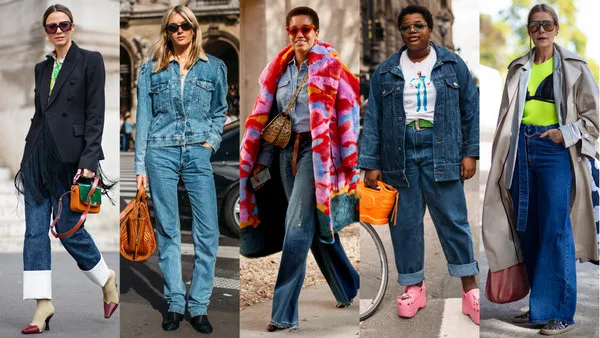Fashion is more than a method of dressing; it is a complex form of self-expression, cultural communication, and economic influence. From avant-garde runway presentations to streetwear trends, fashion shapes identities and reflects the societal, technological, and cultural landscapes of each era. Understanding fashion requires a multifaceted approach that examines its historical roots, psychological impact, economic significance, technological integration, and sustainability challenges.
The Cultural Foundations of Fashion
Fashion serves as a mirror of society, conveying messages about status, identity, and cultural norms. Clothing has historically been more than functional; it has been a tool for social positioning and personal expression.
- Historical Context: In earlier centuries, fashion was a visible indicator of class. The aristocracy of Europe relied on luxurious fabrics, intricate embroidery, and bold silhouettes to demonstrate wealth and power. Over time, fashion democratized, incorporating influences from the working class and subcultures.
- Cultural Significance: Traditional garments often carry symbolic meaning. For instance, the sari in India or the kimono in Japan represents heritage, ceremony, and social identity. Fashion acts as a cultural repository, preserving history through design elements, textiles, and techniques.
- Global Influence: Today, fashion transcends borders, fueled by social media and global markets. Styles from Seoul, Paris, and Lagos can simultaneously influence trends in Los Angeles and London, demonstrating fashion’s role in cultural exchange.
Major Fashion Movements and Their Influence
Understanding fashion history highlights the evolution of style, innovation, and societal impact.
Haute Couture and Artistic Innovation
Haute couture, originating in 19th-century Paris, emphasizes craftsmanship, innovation, and exclusivity. These designs, often custom-made for individual clients, set the standard for creativity in fashion. Haute couture influences ready-to-wear collections and serves as inspiration for global fashion trends.
Streetwear and Urban Expression
Streetwear emerged from skateboarding, hip-hop, and sports cultures, emphasizing accessibility, individuality, and authenticity. Unlike haute couture, streetwear thrives on the interplay of community, music, and art. It demonstrates how grassroots movements can redefine mainstream fashion.
Sustainable Fashion
Modern consumers increasingly demand sustainability, leading brands to explore eco-friendly materials, ethical labor practices, and circular fashion initiatives. Sustainable fashion addresses environmental challenges by reducing waste, recycling fabrics, and using biodegradable textiles, reflecting a shift in societal responsibility and awareness.
Technology and Its Impact on Fashion
Technological innovation has revolutionized fashion design, production, and consumption. From AI-powered trend forecasting to immersive shopping experiences, technology is integral to modern fashion.
- 3D Printing: Designers now create intricate, customized garments that were previously impossible, reducing material waste and production time.
- Artificial Intelligence: AI algorithms analyze social media trends and consumer behavior to predict emerging styles, optimizing inventory and marketing strategies.
- Virtual and Augmented Reality: AR tools enable virtual try-ons, enhancing online shopping while reducing return rates. Virtual fashion shows allow global audiences to experience collections in immersive environments.
Economic Significance of Fashion
Fashion is a major global industry, contributing trillions of dollars to the economy and creating millions of jobs. It influences retail strategies, drives tourism, and stimulates related sectors like textiles, logistics, and marketing.
- Luxury Fashion Markets: Luxury brands maintain exclusivity and high margins, serving as aspirational benchmarks for consumers while driving innovation across the industry.
- Fast Fashion: This sector emphasizes affordability and trend responsiveness but raises ethical and environmental concerns, necessitating sustainable solutions.
- Fashion Weeks: International fashion weeks in Paris, Milan, and New York are cultural events that influence trends, media coverage, and economic activity through tourism and retail engagement.
Psychological and Social Dimensions of Fashion
Fashion affects perception, self-confidence, and social alignment. Clothing communicates identity, social status, and group affiliation, while also influencing behavior and mood.
- Color Psychology: Colors evoke emotions; red conveys confidence, blue represents authority, and green signals balance and growth.
- Professional Identity: Workplace attire can influence perceptions of competence, trustworthiness, and leadership potential.
- Social Signaling: Fashion allows individuals to align with specific groups, movements, or subcultures, creating a sense of belonging and self-expression.
Media and Fashion Trends
Media and digital platforms play a pivotal role in trend dissemination and consumer engagement. Social media, influencer marketing, and online content have transformed how trends emerge and spread.
- Influencer Impact: Fashion influencers introduce products, showcase styling options, and accelerate trend adoption through curated content.
- Content Marketing: Brands craft narratives around collections, emphasizing values such as sustainability, heritage, or luxury, connecting with consumers on a deeper level.
- Consumer Participation: Platforms like Instagram and TikTok allow users to co-create trends, democratizing influence and expanding fashion’s reach.
Challenges Facing Modern Fashion
Despite its global prominence, fashion faces significant challenges that require innovative responses.
- Environmental Concerns: Textile production contributes to pollution, water consumption, and carbon emissions. Sustainable practices are essential to mitigate these effects.
- Labor Ethics: Ensuring fair wages and safe working conditions remains critical, particularly in fast-fashion supply chains.
- Counterfeit and Intellectual Property Issues: Protecting brand integrity requires technology-driven verification and consumer education to combat counterfeit goods.
Emerging Trends Shaping Fashion
The future of fashion emphasizes inclusivity, technology, and sustainable practices.
- Smart Textiles: Wearable technology embedded in clothing enables health monitoring, adaptive temperature control, and interactive features.
- Inclusive Fashion: Brands are expanding size ranges, creating gender-neutral lines, and producing adaptive clothing for individuals with disabilities.
- Artisanal and Local Products: Consumer interest in craftsmanship and locally sourced materials is rising, highlighting quality, heritage, and ethical production.
Real-World Impacts of Fashion
Fashion extends beyond aesthetics, influencing cultural perception, personal empowerment, and social movements.
- Professionals leverage fashion to enhance credibility and presence in professional contexts.
- Social movements utilize fashion as a visual platform for messaging, such as symbolic clothing in activism.
- Creativity in fashion drives broader innovation in art, media, and design industries.
Frequently Asked Questions
1. How does technology influence fashion design?
Technology allows designers to experiment with new materials, streamline production, and predict trends through AI analytics, transforming both creativity and business operations.
2. Why is sustainable fashion critical today?
Sustainable fashion minimizes environmental impact, promotes ethical labor practices, and reduces waste, reflecting the growing responsibility of both consumers and brands.
3. How do fashion trends become global?
Trends spread through social media, influencers, fashion weeks, and celebrity endorsements, enabling rapid global adoption and cross-cultural influence.
4. How does fashion affect personal identity?
Clothing serves as a visual communicator, allowing individuals to express personality, social alignment, and cultural affiliation, reinforcing self-perception and societal roles.
5. Can fashion balance affordability with ethics?
Yes, brands increasingly integrate ethical sourcing, transparent production, and sustainable materials into accessible price points, offering responsible yet affordable options.
6. What is the role of streetwear in modern culture?
Streetwear reflects urban subcultures and community identity, influencing mainstream fashion and redefining trends through authenticity and creativity.
7. What is the future potential of wearable technology in fashion?
Wearable technology promises garments that monitor health, adapt to environmental conditions, and interact with digital platforms, merging utility with style.
Fashion is a dynamic intersection of culture, technology, and economy. Its influence extends from personal expression to global markets, reflecting societal values, innovation, and creativity. By understanding its history, impact, and emerging trends, we can appreciate why fashion remains a vital, evolving force in contemporary life.
This article naturally incorporates the keyword Fashion early in the content and maintains a depth of insight suitable for high-quality, human-like content that aligns with SEO best practices.








